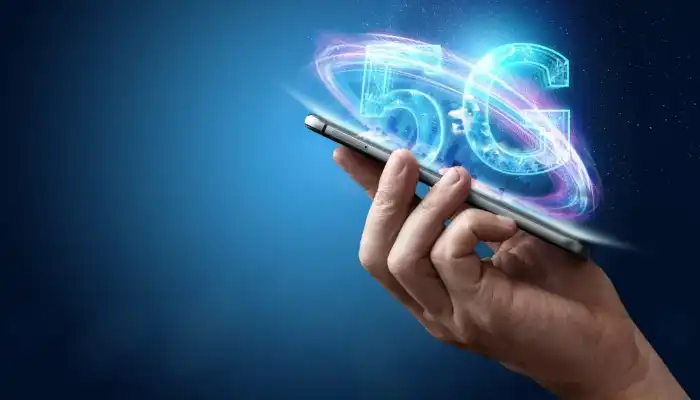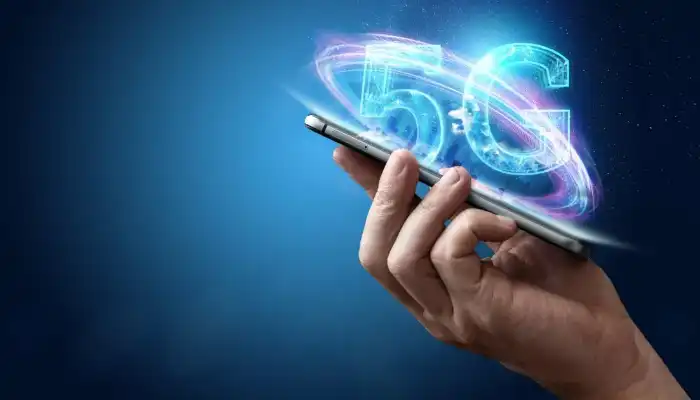Cellular technology is the cause of this ultimate interconnectivity in the world today. From the days of 1G and its bulky brick phones to 4G and today’s sleek smartphones, each generation has brought faster data transfer speeds, more reliable network connections, and new possibilities. And now we stand on the threshold of 5G.
This blog seeks to be the guide that takes you through understanding all there is to know about 5G technology. We will dive into its main features and benefits for other generations, as well as reveal what tomorrow may hold for us.

A Brief History of Cellular Technology: Setting the Stage for 5G
We take a quick look back at how cellular networks have evolved.
- 1G (1980s): The first generation was characterized by simple voice calls, which laid the foundation for mobile communication.
- 2G (1990s): Short messaging service became available, hence SMS texting was introduced.
- 3G (2000s): The Internet went mobile, making basic web browsing and emailing possible.
- 4G (2010s): The introduction of high-speed data with 4G LTE allowed video streaming, downloading music, and an explosion in mobile applications.
Every subsequent generation has always sought to overcome certain limitations of the previous one; however, none has been as big a leap as expected from 5G.
Demystifying 5G: What It Is and How It Works
The fifth-generation cellular network technology, referred to as “5G,” aims to completely change the worldwide connection scene. Here are some key aspects:
- What is 5G? In simpler terms, this is a new wireless standard intended for far greater data rates compared to the systems that were there before it, with ultra-low latency or response time and huge network capacity. Just think how long it would take you to download a full-length movie in seconds or play online games with virtually no latency—that is, 5G.
- Key improvements over 4G: Several advantages are there for 5G compared to 4G:
- Speed: Gigabits per second (Gbps) versus megabits per second (Mbps) on the other hand, in the case of 4G.
- Latency: Reduced latency, which makes it very close to a near-instantaneous response.
- Capacity: A larger number of devices can be connected simultaneously by a 5G network.
- Frequency Bands: Compared to 4G, 5G utilizes a broader spectrum. These are the two main types:
- Sub-6 GHz: Its coverage is wider, but its speeds are slightly slower.
- Millimeter Wave (mmWave): It offers superfast speeds, though it has a shorter range and is more easily obstructed by obstacles.
Unveiling the Architecture of 5G Networks
To appreciate how the fifth generation performs, one needs to look under its hood. Some of these include:
- Small Cells: Rather than having traditional cellular towers, clusters of smaller, more localized base stations have been installed throughout an area to facilitate communication within them. Denser deployments enable better signal coverage as well as capacity improvement.
- Massive MIMO (Multiple-Input and Multiple-Output): With this technology, multiple antennas on both ends transmit and receive data at once, thereby boosting speed and efficiency significantly.
- Beamforming: To maximize reception strength and minimize interference in crowded areas, radio waves can be directed at specific equipment from point to point.
Deployment Strategies:
Additional aspects that will affect deployment strategies include:
- Distance between transmitting nodes
- The choice between mmWave and sub-6GHz
- Costs per unit area covered
- Availability of spectrum
- Desired bandwidth/subscriber experience
- System complexity and power consumption
Sub-6 GHz provides wider coverage for more general use, while mmWave is suited for high-density environments that require higher speeds.
Unveiling the Advantages of 5G
The real might of 5G is in its ability to revolutionize how we link and interface with the rest of our world. The following are just a few highlights:
- Faster Speeds and Lower Latency: Think about getting a high-definition movie in seconds or enjoying a responsive online gaming experience. 5G has download speeds that exceed 20 Gbps, which is significantly above what 4G could achieve. This allows you to stream without buffering, send files way faster, and have an overall more responsive user experience. In addition, 5G has far less latency than its predecessor in terms of the time it takes for information to go between devices. This very short delay makes it possible for new applications that require immediate feedback, like remote surgery using robots and self-driving cars.
- Support for Massive IoT (Internet of Things) Deployments: The Internet of Things (IoT) comprises various connected gadgets, such as smart home appliances and industrial sensors, among others. With its massive network capacity, 5G can connect billions of things at once. Hence, the monitoring system will be able to optimize infrastructure development decisions based on real-time data gathered from these devices.
- Potential Applications in Various Industries: However, the transformative power of this technology goes beyond an improved mobile browsing experience, as explained below:
- Healthcare: e.g., remote patient monitoring, exchanging data directly between hospitals, and complex surgeries performed with assistance from robots.
- Transportation: Such vehicles communicate both among themselves and with infrastructure, paving the way for autonomous driving systems as well as enhanced traffic control.
- Manufacturing: This involves smart factories comprising machines interlinked together that enhance production efficiency through maintenance predictions rather than waiting until they collapse.
Clearing the Confusion: Myths vs. Facts about 5G
Despite having several advantages, there have been some misconceptions about the use of this fifth-generation wireless network. To separate facts from fiction, the following are some of the most common ones:
- Myth: 5G technology is harmful to health due to the higher frequencies used.
- Fact: Cellular network emissions undergo stringent regulation by authorities that set safety standards. The existing scientific research does not show that 5G has any unique health threats compared to previous mobile phone technologies.
- Myth: There is Limited and Unreliable Coverage for Fifth-Generation Wireless Technology (5G).
- Fact: The actual coverage of this latest technological innovation is being expanded continuously since more regions are being deployed with 5G infrastructures. However, it should be noted that while initial rollouts may focus on specific areas, other improvements are made to make them accessible everywhere else.
- Myth: Next-generation networks have more security breaches compared with their predecessors.
- Fact: Security is paramount and therefore a leading concern in 5G networks. Like any new technology, there might be some difficult cases, but measures such as robust security protocols will help protect these networks from cyberattacks.
Challenges and Considerations for Widespread 5G Adoption
The way towards mass adoption of 5G is not without stumbling blocks. Some key challenges include the following:
- Infrastructure Requirements and Deployment Costs: Building an extensive infrastructure for pervasive coverage of 5G entails huge investments as well. Additionally, signal strength and capacity can only be maximized by deploying denser, smaller cell sites.
- Spectrum Allocation and Regulatory Hurdles: Different states are at different stages of giving out spectrum bands for use in implementing these technologies. Henceforth, seamless global adoption will require the establishment of proper policies leading to efficient frequency distribution across various countries around the world.
- Potential Cybersecurity Risks: Just like any other connected system, 5G networks are subject to possible security breaches. It will thus be very important to put in place tough measures on cybersecurity and promote international cooperation to shield against such risks.
The 5G Horizon: A Glimpse Into Tomorrow
5G technology is still at its early stage of development, albeit with a lot of potentials. Here is what the future holds:
- Evolution of 5G Technology: There will be continuous improvements in 5G technology with faster speeds, lower latency, and more capable networks over time.
- Emerging Use Cases and Applications: As the adoption of 5th Generation Networks becomes increasingly widespread around the globe, we can expect a multitude of new ideas across different sectors. From virtual reality experiences to improved industrial automation, there’s no limit to what can be done.
- Ongoing Research and Development: The world of 5G is fast-moving, with unending research activities going on aimed at discovering its full potential. Below are some areas that are under examination today:
- Network Slicing: This makes it possible for virtual networks within the physical infrastructure for 5G. It has capabilities that allow each slice of customization to fit different application requirements, thus supporting a wide range of use cases.
- Integration with Artificial Intelligence (AI): AI can help optimize 5G networks by automating network management or allocating resources based on demand in real-time.
- The Future of Fixed Wireless Access (FWA): Through improved internet access speeds, fixed wireless access has been enhanced by 5G, which offers a reliable alternative as compared to traditional cable or fiber optic connections. In addition, such an initiative might bridge the digital divide between underserved regions while also bringing about increased flexibility for residential and business internet users.
- Standardization and Interoperability: It is necessary to ensure that there is seamless interoperability among various 5G networks and devices offered by different companies. Ongoing research aims at enhancing global standards for this purpose.
Conclusion
5G marks a turning point in the world of mobile communication. With its unprecedented speed, ultra-low delay time, and great network capacity, it can greatly change our lifestyle, working environment, and interaction with the surrounding world. Despite some obstacles regarding infrastructure development, sharing of spectrum, and cyber security issues, ongoing research work has so far paved the way towards a 5G-powered future. As technology advances, it will be important to stay updated on the progress made as well as leverage its potential to unlock exciting 5G opportunities.

